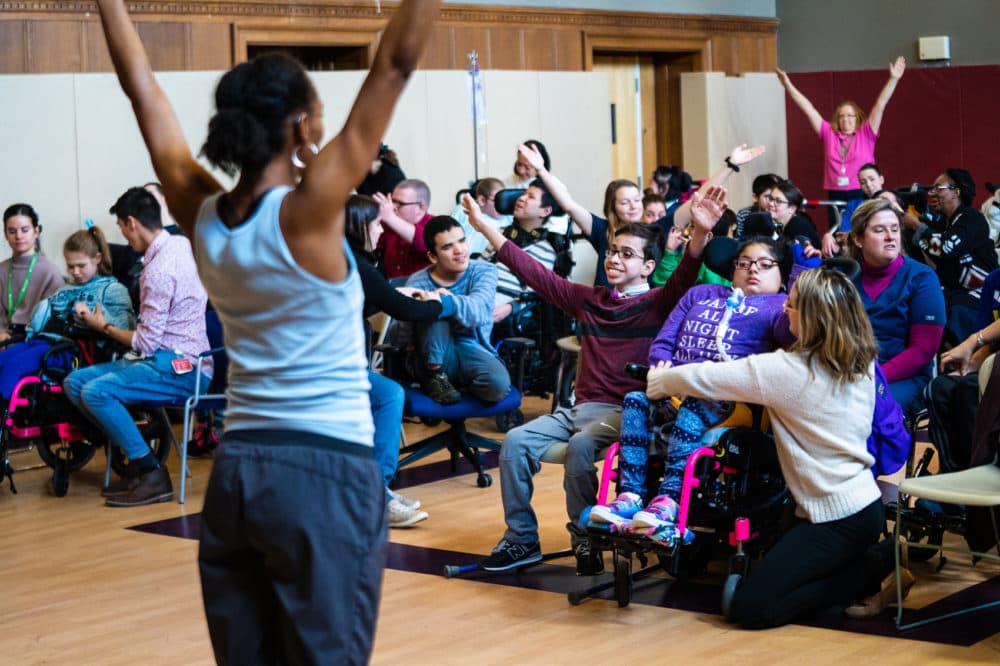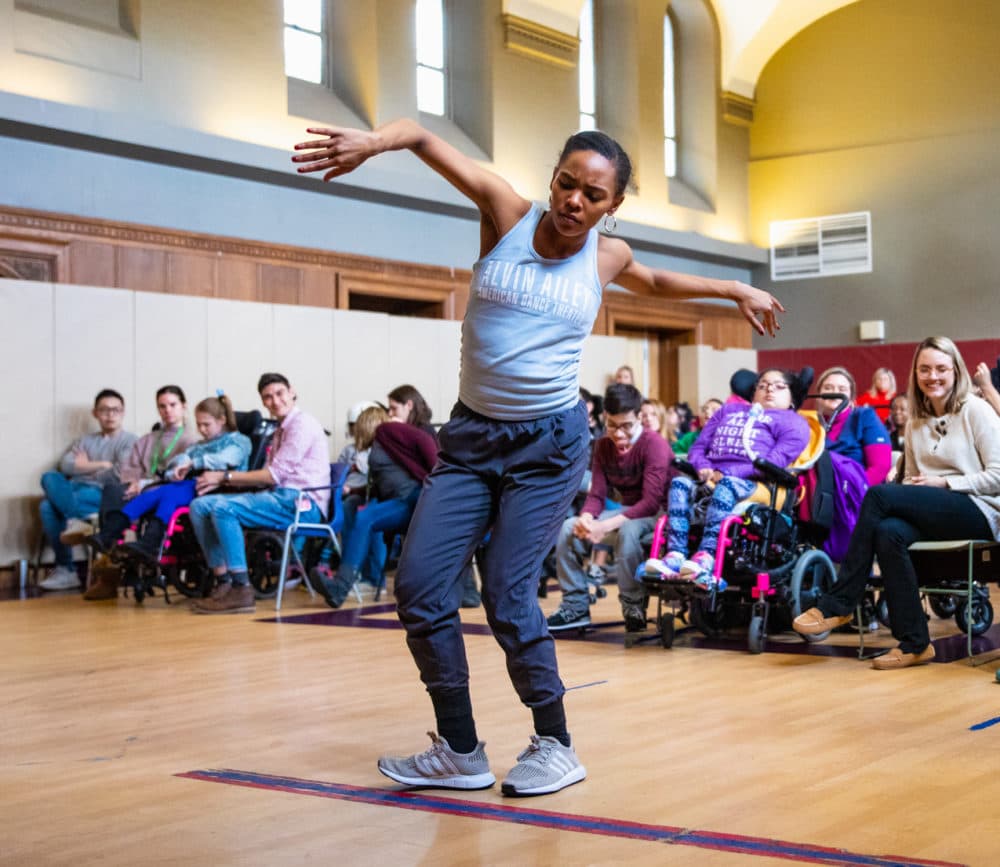Advertisement
How Owning Her Disability Helped Alvin Ailey Dancer Samantha Figgins Find Her Confidence

The room fell quiet as Samantha Figgins began to dance. She contracted and extended, each gesture ripe with meaning. One moment she crouched in seeming defeat, and the next she stood tall, then whirled with unmistakable joy.
Flanked by Alvin Ailey American Dance Theater colleagues, Figgins performed a signature work — “Revelations” — for students at Kennedy Day School at Franciscan Children’s Hospital in Brighton earlier this year. The performance was part of Celebrity Series’ annual outreach program, which brought the dancers to four local schools this year. The troupe is back in Boston this week for performances at Boston’s Wang Theatre.
Figgins is as deliberate and graceful as the dancers by her side. But until recently her experience has been different from theirs. Last fall, she was fitted for the first time with hearing aids.
Now 29, Figgins became deaf in her right ear after an episode of spinal meningitis at 10 months old. She also developed an auditory processing disorder (APD), a condition that affected her ability to decode language, causing her to miss certain words and sounds. This meant that Figgins struggled with processing music, instructions in rehearsal, and verbal cues dancers give one another on stage. Her hearing also affected her balance. Throughout her entire career, all of her injuries have been on her right side.

Figgins says that her sisters were major forces that motivated to pursue dance as a career. Her oldest sister, Dionne Figgins, who is a professional dancer, was a role model. And her twin sister, Jenelle Figgins, was a constant companion who shared a passion for dance.
For high school, the twins were accepted to Washington, D.C.’s Duke Ellington School of the Arts where they became an unbeatable team. Positioning herself near her sister in class, Figgins could look to her twin for support if the instructor strayed out of her hearing range. Afterward, the sisters would debrief and Figgins would catch herself up on anything she had not heard in class. Of the 30 students in their class, they are the only two who became professional dancers.
Both sisters were accepted to SUNY Purchase for college. They remained close, but their different schedules created distance. Without their frequent debriefs, Figgins was felt the impact of her hearing loss more acutely. She was never sure whether she fully understood what choreographers and instructors were saying when they described movements or explained backstories of certain pieces.
Figgins remembers it as an important chapter that taught her to manage her doubt through commitment and hard work. She distanced herself from friends who were less serious about dance than she was, and worked alongside peers constantly to ensure that she had mastered everything from rehearsals.
“I just love to dance,” she says, “and I think I knew I was good. And so if I could just get past all these thoughts in my head and all the voices saying you didn't hear that right… [I know] that all that hard work that I do on my own frees me. Where I fall short, I over prepare.”
After graduating, Figgins ascended to the dance world professionally. She danced in Complexions Contemporary Ballet before being invited to Alvin Ailey in 2014. Though Figgins worried that relinquishing her pointe shoes would negatively affect her technique, her doubts soon faded. The Alvin Ailey American Dance Theater, which is celebrating its 60th anniversary this year, began with a group of young, black modern dancers in New York City. And being surrounded by fellow black dancers and learning Ailey’s choreography ultimately made Figgins feel that “coming to Ailey was like coming home.”
After a performance in 2017, Figgins met a young dancer from the audience who was hard of hearing. They clicked immediately and their friendship eventually resulted in Figgins meeting the family’s audiologist, who fitted her with her first set of hearing aids. Though Figgins had explored the option before, they were prohibitively expensive.

The hearing aids restored much of Figgins’ hearing. The effects on her dancing have not gone unnoticed. Matthew Rushing, Alvin Ailey’s Rehearsal Director, says that Figgins’ technique has always been stellar, but the hearing aids have bolstered her emotionally.
“Now she’s definitely hearing and able to process notes and music,” he says. “I definitely see a huge jump in her confidence level.”
For Figgins, the effects have been nothing short of transformative.
“Now that I have these hearing aids I have less chatter in my mind and so I have more space to think things through … I don't have to do all the questions that I usually do,” she says. “I can just be in the moment now.”
Figgins says her journey has made her determined to support other artists. She will never forget how her hearing informed her identity.
“There is a need for art artists with disabilities, for our voices, she says. “So me owning my disability and the things that I've been through is only giving me more opportunities to bring up others.”
Alvin Ailey American Dance Theater is performing at the Boch Center's Wang Theatre from Thursday, May 2, through Sunday, May 5.
